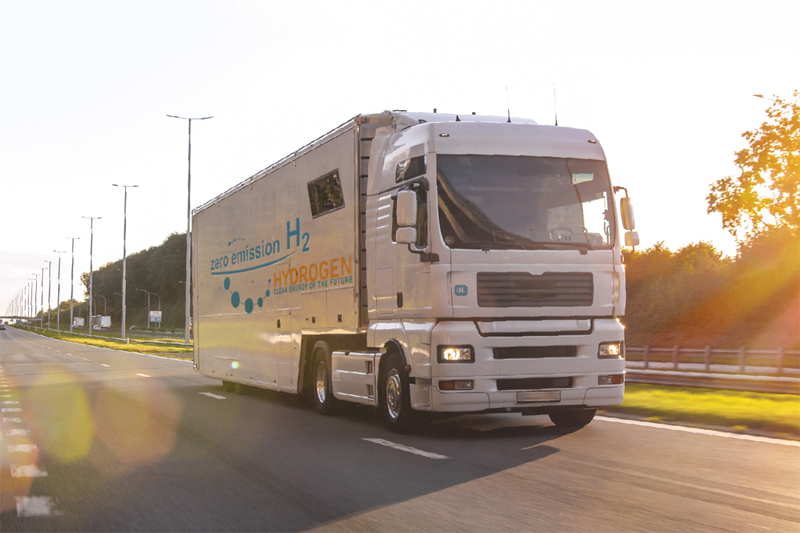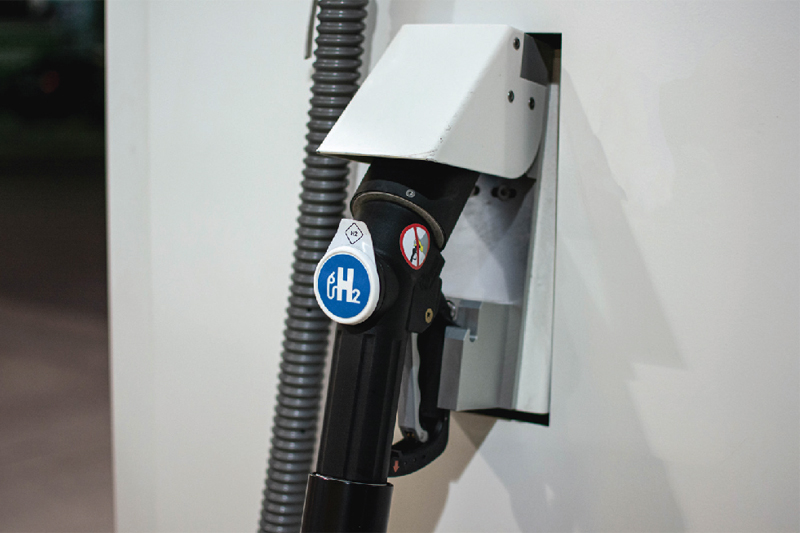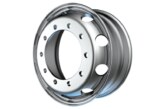
CVW spoke to David Wright, Company Secretary of independent trade body the Verification of Lubricant Specifications (VLS), about whether hydrogen could be a viable solution to the emissions challenge and its potential impact on the lubricants sector.
Talk about emissions in the automotive industry is changing. To date, discussion about the future of automotive transport has centred almost wholly on electric vehicles. But voices are saying that pure electric might not be the only solution. Hydrogen may have a role to play to help meet emissions reduction targets.
For both passenger and commercial vehicles, many see battery-powered electric vehicles as the key to achieving carbon neutrality targets. Electric vehicles have significant environmental benefits. But, lithium shortages, limited range, and the relatively short lifespan of batteries continue to hamper technological advances for these types of products. Also, the sheer volume of charging infrastructure required, in such a short space of time, means some companies are investigating other options such as hydrogen.
How would it work?
Hydrogen can be used to power vehicles in two different ways; first, in a hydrogen fuel cell and second, as a fuel itself.
Hydrogen fuel cell technology was actually first developed by Sir William Grove in 1839, so it has already been with us for over one hundred years. Hydrogen fuel cell engines require hydrogen and oxygen to react together in a special cell to produce electricity which can then be used within a battery to power an electric motor. The first commercially available hydrogen fuel cell powered vehicle to appear was the Hyundai Tucson in 2013, followed two years later by the Toyota Mirai.
More recently, Stellantis is preparing to enter the hydrogen powered commercial vehicle market with hydrogen fuel cell versions of its Peugeot e-Expert and Citroen e-Dispatch. Daimler Truck and BP are piloting the development of hydrogen infrastructure and the introduction of hydrogen-powered fuel-cell trucks in the UK. Toyota says it is preparing to take its hydrogen-powered fuel cell (FC) electric technology from prototypes to production, assembling integrated dual FC modules destined for use in hydrogen-powered, heavy-duty commercial trucks from 2023.
Already hundreds of filling stations all over Europe are primed to dispense hydrogen fuel for these vehicles. Hydrogen itself be produced from a variety of domestic resources, including renewable power like solar and wind, as well as natural gas, nuclear power and biomass. It can also combat issues around charging time and range.
Just like battery-powered electric vehicles, hydrogen fuel cell vehicles have totally different fluid requirements to diesel or gasoline-powered internal combustion engines. Lubricants manufacturers have been busy developing fluids to suit these vehicle needs, catering to the increase in oxidation and the need to dissipate an increase in generated heat around the power units.
A feasible fuel?
Hydrogen can also be used as a fuel itself to drive vehicles, mixing it with air to produce combustion in a near conventional-type engine.
This could be good news for lubricants manufacturers, as engines running on hydrogen in a combustion engine will still need some form of lubrication in the crankcase, to keep them functioning effectively. Pistons and other moving parts will need to be lubricated to keep the engine functioning properly.

The low ignition energy of hydrogen ensures easy ignition of an ultra-lean mixture with air. But like any fuel solution, it has its drawbacks with premature ignition and knock. The combustion process of a hydrogen-fuelled combustion vehicle would produce NOx, which would need to be cleaned by selective catalytic reduction prior to exhaust emission, much as we have at the moment with traditional internal combustion engine vehicles and the requirement for exhaust after-treatment devices.
Additionally, in order to be operable, hydrogen needs to be converted from a gas to a liquid which means the engine needs to run at very high pressures. During engine operation, blow-by will always occur due to the rapid pressure rise and the low density of hydrogen gas. When exhaust gases enter the crankcase they can condense, when there is no provision of proper ventilation. With gasoline or diesel, water is produced as a byproduct of the combustion process and the same applies to hydrogen, only more so!
The water produced as a by-product of the combustion process will mix into the lubricant and reduce its lubrication ability. As a result, there is a real risk of a higher degree of engine wear. Specific lubricants need to be developed to cope with this dilution. A lubricant that is compatible with increased water concentration in the crankcase should be used, so that it can withstand the increased moisture levels and still keep the engine fully lubricated.
Electric vs. hyrdrogen
It remains to be seen whether hydrogen-fuelled or hydrogen fuel cell vehicles will become a viable alternative to battery-powered electric vehicles.
The UK government has signalled its intent to consider hydrogen as a worthwhile option by unveiling the UK Hydrogen strategy in August 2021. This strategy sets out the approach to developing a thriving low carbon hydrogen sector in the UK to meet an ambition for 5GW of low carbon hydrogen production capacity by 2030.
According to the government document: “Hydrogen is likely to be fundamental to achieving net zero in transport, potentially complementing electrification across modes of transport such as buses, trains, and heavy goods vehicles (HGVs). It is also likely to provide solutions for sectors that will not be able to fully decarbonise otherwise, including aviation and shipping.”
Government funding includes £11.2 million to develop and manufacture lowcost hydrogen fuel cell technology for buses and create a hydrogen centre of excellence in Northern Ireland and £14.6 million to develop a zero emission, hydrogen-fuelled engine to help decarbonise heavy goods vehicles in Darlington.
The UK’s first ‘Hydrogen Transport Hub’ will open in Tees Valley to focus on future hydrogen research and development, real world testing and demonstrations. Supported by £3 million of initial government development funding, the hub will bring a number of hydrogen vehicles to public roads and waterways, alongside the associated refuelling infrastructure. Another hydrogen hub is planned for Holyhead in Wales to pilot the creation of hydrogen from renewable energy and its use as a zeroemission fuel in HGVs.
OEMs are also investing hydrogen. Engineers at JCB in Derbyshire have developed a hydrogen motor for heavy machinery. The company recently unveiled a prototype hydrogen powered JCB backhoe loader and a Loadall telescopic handler, targeting the end of 2022 for the first machines to be available for sale to customers.
In a recent press release, JCB Chairman Lord Bamford said: “We are investing in hydrogen as we don’t see electric being the all-round solution, particularly not for our industry because it can only be used to power smaller machines. It does mean we will carry on making engines, but they will be super-efficient, affordable, high-tech hydrogen motors with zero CO2 emissions, which can be brought to market quickly using our existing supply base.”
Whatever solutions the industry develops, lubricants manufacturers will be watching closely, ready to develop the products required to keep engines functioning properly.








